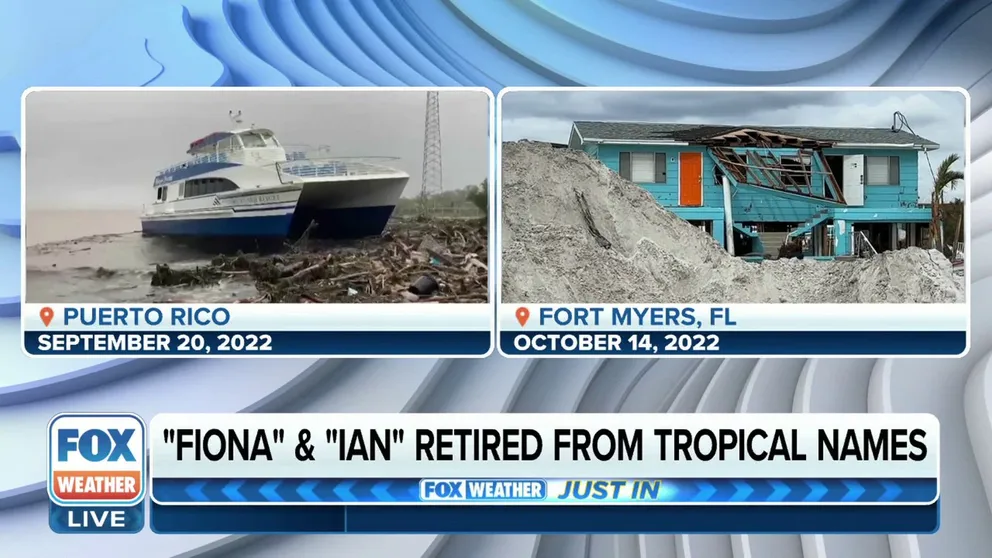The beasts of the Atlantic: 96 retired hurricane or tropical storm names
Which hurricane names have been retired? Here is a look at the names you'll never see used again in the Atlantic Basin.
Ian, Fiona retired from hurricane naming lists
The World Meteorological Organization removed the names Fiona and Ian from rotation due to the death and destruction they caused during the 2022 hurricane season.
Nearly 100 hurricane or tropical storm names have been retired from future use in the Atlantic Basin.
A committee of the World Meteorological Organization is responsible for creating each year’s tropical cyclone name list. The National Hurricane Center then assigns these names, in alphabetical order, to any system that becomes a tropical storm (39- to 73-mph winds) or hurricane (74-plus-mph winds) in the Atlantic Basin, which includes the Atlantic Ocean, Caribbean Sea and Gulf of Mexico.
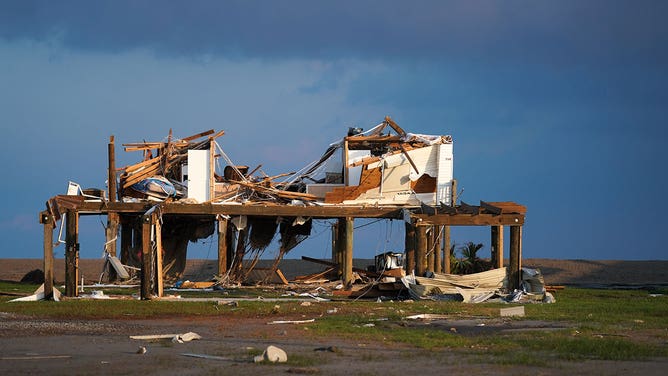
The remnants of a destroyed home are seen in the wake of Hurricane Ida on Sept. 3, 2021, in Grand Isle, Louisiana.
(Sean Rayford / Getty Images)
The hurricane name lists rotate every six years, so the 2023 list was last used in 2017. However, if any storms from the list are particularly destructive and/or deadly, the WMO can vote to retire their names from being used again in the future, such was the case with hurricanes Harvey (2017), Ian (2022), Katrina (2005), Michael (2018) and Sandy (2012).
HURRICANE HARVEY: BY THE NUMBERS
Including the 2022 hurricane season, 96 names of hurricanes or tropical storms in the Atlantic have been officially retired by the WMO since the practice began in 1954.
The most recent retired names are Fiona and Ian – devastating hurricanes during the 2022 season. They will be replaced by the names Farrah and Idris when the list is recycled in 2028.
Looking back at Fiona and Ian
Hurricane Fiona crashed onto the southwestern coast of Puerto Rico on Sept. 18, 2022, as a Category 1 hurricane with wind gusts as high 103 mph. The storm caused more than two-dozen fatalities. It brought extreme rainfall, causing widespread flooding and mudslides that damaged homes and businesses. The storm also left more than 1 million without power in Puerto Rico.
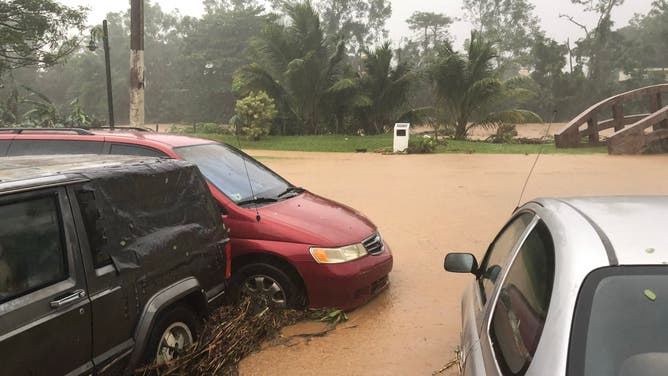
A flooded road is seen during the passage of hurricane Fiona in Villa Blanca, Puerto Rico, on September 18, 2022.
(MELVIN PEREIRA / AFP / Getty Images)
Hurricane Ian crashed into Southwest Florida on Sept. 28, 2022, as a Category 4 hurricane with 150-mph winds. Ian caused more than 100 deaths across the Southeast, with most of the deaths occurring in Florida. It caused $1 billion in damages to the agriculture industry in Florida. Additionally, Ian dumped 10 or more inches of rain across 3,500 miles of Florida on the day of landfall. The storm ranks as the third-highest coverage of 10-plus inches of rain in a 24-hour period from a tropical system since 2005, according to NOAA's Weather Prediction Center. Only Hurricane Harvey – another retired name – in 2017 outranks Ian.
IAN, FIONA RETIRED FROM HURRICANE NAMING LISTS BY WORLD METEOROLOGICAL ORGANIZATION
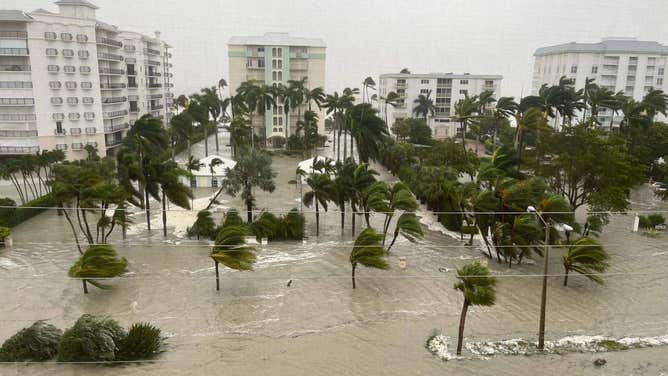
Hurricane Ian's impact on Naples, Florida.
(Naples Police Department / FOX Weather)
Ida retired after 2021 season
After the hurricane season of 2021, the WMO retired Hurricane Ida. Ida formed on Aug. 26, 2021, in the Caribbean Sea and made landfall in southeastern Louisiana on Aug. 29 as a Category 4 hurricane. The hurricane was blamed for the deaths of more than 100 people, and its estimated damages topped $75 billion from the Caribbean to New England. The storm's destruction was enough to propel the storm to the fifth-costliest hurricane in U.S. history, ranking just behind Katrina, Harvey, Maria and Sandy, respectively.
IDA RETIRED FROM TROPICAL CYCLONE NAMING LIST AFTER BECOMING 5TH COSTLIEST U.S. HURRICANE
3 names retired after record 2020 season
Following the record-shattering 2020 hurricane season, the WMO voted to retire three names from future use: Laura, Eta and Iota.
At Category 4 intensity on the Saffir-Simpson Hurricane Wind Scale, Laura was the strongest hurricane to make landfall in southwestern Louisiana since records began in 1851, according to the National Weather Service office in Lake Charles, Louisiana.
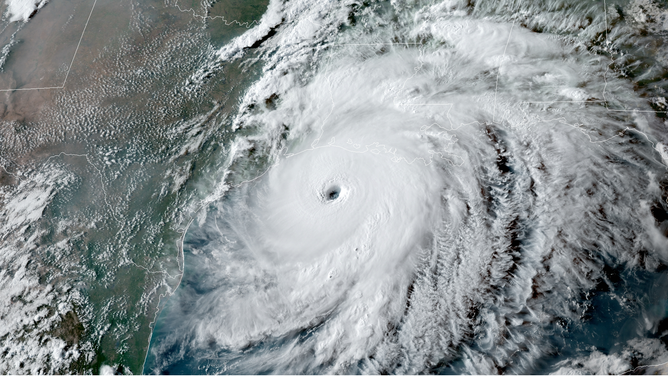
GOES-East GeoColor satellite image of Hurricane Laura at 6:01 p.m. Central time on Aug. 26, 2020.
(NOAA/NESDIS/STAR)
Eta and Iota both devastated Central America within a two-week span in November 2020. NASA said Iota was the year’s strongest hurricane, with maximum sustained winds reaching 160 mph (Category 5).
HOW TO WATCH FOX WEATHER ON TV
The 2005 hurricane season saw the most storm names retired of any year, with five: Dennis, Katrina, Rita, Stan and Wilma. In 2017, there were four names retired: Harvey, Irma, Maria and Nate.
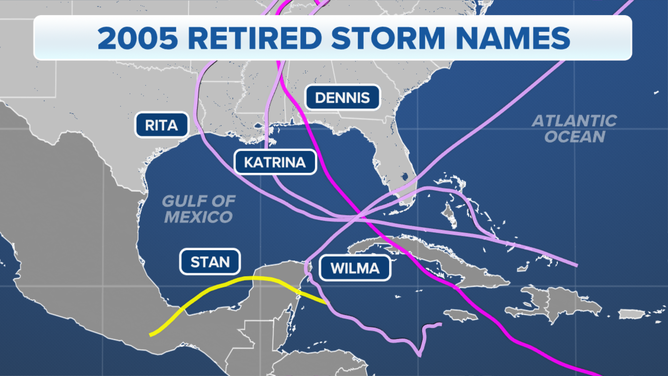
The tracks of 2005's five retired hurricanes: Dennis, Katrina, Rita, Stan and Wilma.
(FOX Weather)
History of retirement
Since 1954, only 20 years did not have a retired hurricane or tropical storm. The most recent year was 2023 despite Idalia becoming a Category 4 hurricane and making landfall in Florida as a Category 3 storm.
A tropical cyclone name doesn’t need to become a major hurricane (Category 3, 4 or 5) to be retired by the WMO. A notable number of storms have been retired because of deadly flooding in the Caribbean islands, Central America, Mexico or the U.S. Nate in 2017 was the most recent example of this, as it was only a Category 1 hurricane, but its heavy rain caused significant impacts in Central America and resulted in 44 deaths.
HOW ARE HURRICANES RATED? THE SAFFIR-SIMPSON HURRICANE WIND SCALE EXPLAINED
Two retired storm names in the Atlantic were never even hurricanes: Tropical Storm Erika in 2015 and Tropical Storm Allison in 2001.
Thirty deaths were directly blamed on Erika’s torrential rain and flooding on the island of Dominica.
Allison caused $9 billion in damage, mostly in the Houston area, after more than 40 inches of rain fell in parts of southeastern Texas. It was responsible for 41 deaths and was one of Houston’s worst floods on record until Harvey in 2017.
